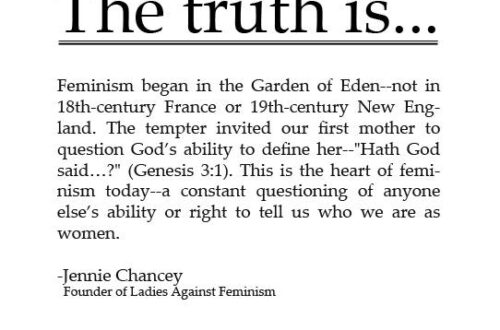FEMEN, the feminists turning the oppressed woman’s body back against the oppressors
An article about topless women activists like the FEMEN is always going to be clickbait, however there is more substance to their activities than exposing boobs. The radical feminism of FEMEN has reignited a long-term battle within feminist movements, which like all emancipatory political movements have regular heated debates on the strategies to follow. If you have an interest in feminist, this deserves a few lines.
Female nudity: sexist representation or classic symbolism of liberty?
FEMEN activists occupy the media terrain with their naked breasts. They denounce prostitution, they defy religious institutions deemed misogynistic, and they advocate the use of nudity as a weapon against sexism. This use of nudity has been the cause of debate in the past period. For instance French journalist Mona CHOLLET, author of Fatal beauty, accuses FEMEN of a “deliberate photogenic” approach reducing them to exhibit hyper sexualised bodies, with little rhetorical substance, hence comforting the patriarchal system that objectifies women. “It is not obvious in the current debate that the media and the general public see the difference between the FEMEN and for instance former porn star turned Italian MP ‘La Cicciolina’ (who started wearing a crown of flowers on her head) or the pin-up on page 3 of The Sun,” she argued in Le Monde Diplomatique in March 2013. (1)
What the author of this article forgets is that to reduce women to sexual objects, as advertising or porn do so well, nudity is not enough. It must be associated to an imagery of female submission to a dominating male, in a simulation of possession.
It is, for instance, what students from the University of Saskatchewan have exposed in a project on gender studies. Their portfolio shows the absurdity of such ads by inverting roles between men and women:
Sexist Dolce & Gabbana ad and its parody – click here (2) to watch the students’ video.
An ad is sexist when a woman is put in a submissive and lascivious position; when she is photoshopped or made up to the extreme to create an artificial beauty; when she offers her body to the consumer male who is demanding his pound of fresh flesh. As Simone de Beauvoir already denounced it in The Second Sex (3), immanence is for women (i.e. passivity, submission), transcendence is for men (i.e. action and achievements in the public sphere).
So the FEMEN may be posing for photographs, but without high heels, their legs firmly stomping the ground, looking right ahead, their fist raised, and without any cutie smile. The least we can say is that the FEMEN are a far cry from the bimbo symbolism of Cicciolina, who totally embraced the commercialisation of her hyper sexualised body. Instead they project a symbolism evoking combat and determination.
Cicciolina during the promotion of her memoirs –
Cover of the FEMEN book, Editions Calmann-Levy (4)
According to the FEMEN, naked breasts symbolise the misery of Ukrainian women. The crown flower is a reference to an old Ukrainian saying: “Gola, bossa i ou vinkiou,” which means “without clothes, without shoes, but with a crown flower in the hair.” “It is meant to describe a young girl living in poverty, but cheerful, active, and who would not let herself down,” explained Anne Hutsol in Russian magazine Ogoniok in November 2010. Nudity as the affirmation of her liberty and sovereignty is a way to defy conservative public and religious authorities.
Today in Tunisia, when Amina writes on her chest “my body is nobody’s honour,” she asserts her refusal to submit to her father or brothers, and asserts her sovereignty over her own body, as a free individual. Through that action, she doesn’t promote nudity, but tests women’s freedom. And too bad if some find it confronting, because the whole point is precisely to raise awareness. At a symbolic level, uncovering breasts becomes a pure act of freedom. The reference to Delacroix’s famous painting Liberty Guiding The People is totally explicit in the FEMEN’s visual communication and ways they stage their combat to secure their freedom.
Liberty Guiding The People, E. Delacroix, @ Wikicommons –
The FEMEN, referencing Delacroix, @ FB Femen France
That painting depicts the revolution of July 1830 that toppled Charles X. Delacroix painted the barricades to offer a new vision of the allegory of liberty. She is “a working class woman, alive, pugnacious, that personifies revolt and at the same time an antic goddess whose naked breasts evoke the Victory of statues of the Antiquity.” (6)
Stone carving of the goddess Nike at the ruins of the ancient Greek city of Ephesus.
This feminine representation of Liberty has impressed the French national psyche so much that it was printed on 100 francs banknotes from 1978 to 1997. And this, without anyone finding the apparition of a woman’s nipple a frowning matter.
100 francs banknotes “Delacroix”.
Holly Van Voast walking topless in New York.
The taboo around topless women’s body is a social construct
It is interesting to note that bare breasts are authorised in public in New York City since 1992 – to respect gender equality. In 2013 police officers had to be reminded of it after artist Holly Van Voast filed a federal lawsuit in Manhattan, charging the NYPD repeatedly violated her constitutional right to tour the city without wearing a shirt.
That episode is anecdotal but it reminds us that historically naked breasts haven’t always had the erotic meaning they have today. The fashion for naked breasts was followed in the 15th century by Agnès Sorel, mistress of Charles VII King of France. Her dresses sometimes revealed one of two breasts. In fact, in the period between the Renaissance and the 19th century, exposing legs and ankles was more daring than uncovering breasts, showing that covering them is definitely a social construct, a convention.
Portrait of Agnès Sorel – Jean Fouquet, Chateau royal de Loches.
A short history of feminist activism: from the suffragettes to the sluts
The FEMEN’s approach follows a long tradition throughout history of activists who have organised “coups” to confront the political and religious authorities or to raise public awareness. More than a century ago, in 1908 Hubertine Auclert and the suffragettes stormed a polling booth to tip over a ballot box during municipal elections.
During the second wave of feminism of the 1960s and 70s, the “fight for women’s liberation” came with the demand to have complete freedom over their own body. At that time, a symbol of women’s liberation was to take off their bras and burn them during protests. This symbol was enabled by the control of fecundity, both contraception and abortion.
Cover of the Petit Journal from 17 May 1908 showing Hubertine Auclert –
Bra-burning during a Miss America contest in order to protest against the degraded image this event presented of women – 7 September 1968 in Atlantic City.
We might have forgotten how radical the actions of the MLF were back in those days (MLF = Mouvement de Liberation des Femmes): activists used to throw meat in anti-abortion protests and even at women’s summits organised by Elle Magazine. Le Nouvel Observateur told the story 40 years later:
“Mysterious Amazons with shaven necks and wide shoulders stormed the cocktail party. They started handing questionnaires because abortion was not on the agenda: ‘when you are pregnant and you don’t want to keep your child, do you prefer: knitting sticks, a vine branch, or barbed wire?’ The MLF used to really push it: they used to talk about motherhood as a form of slavery, about pregnancy like a tumour.”
In 1971 they wrote the “Manifesto of the 343 sluts” in which they defended abortion rights. Totally in line with the spirit of May 1968, the fight against the patriarchate was a Marxist, secular fight against the bourgeois order:
5 April 1971: “Manifesto of the 343” in Le Nouvel Observateur magazine.
Each year in France, one million women get an abortion. (…) Their condition is unique in history: human beings who, in a modern society, do not have the freedom over their own body. Until now, only slaves faced this condition. (…) To the fascist of all kinds – whether they are openly so, or whether they are the Catholics, the fundamentalists, the demographers, doctors, experts, the “responsible men” – we are saying that we have unmasked them. We are naming and shaming them as assassins of the people. We are saying that we forbid them to use the “pro-life” words because they sound like an obscenity coming out of their mouth. We are 27 million. We will fight till the end because we want nothing but what is owed to us: the free sovereignty over our own body. (…) It is a historic movement that brings together not only women from the MLF, but also all women, wherever they live or work, who have decided to take their own matters into their own hands. (10)
Sluts. In 2011 Canadian activists coined the term and organised the first “Slut Walk” in Toronto following a policeman’s declaration: “I’ve been told I’m not supposed to say this – however, women should avoid dressing like sluts in order not to be victimised.” Thousands of people marched to remind us that a woman victim of a rape can never be responsible, whatever her dress or measurements.
Since that first march, “Slut Walks” have been organised all over the Western world to denounce the ambient “slut-shaming” and defend women’s right to dress whichever way they please, even pushing sceptics such as Australian blogger @Drag0nista to change her mind.
Slut Walk in London, 10 June 2011.
To abdicate on that right would mean to condone the patriarchal system that makes the public space a zone dedicated to men and in which women are potential preys.
Street harassment is another trend reminding women that they don’t belong to the public space, and that if they are insulted or abused it is because they have been provoking it by not knowing their place, i.e. at home.
“Neither mother neither whore”: refuse the choice imposed by the patriarchal system
Street art, Paris: “ni maman ni objet ni putain”.
The three monotheist religions have relentlessly repeated that message: that the only “respectable” role of a woman is to stay at home and fulfil her motherly duties. So the FEMEN are undeniably feminists when they denounce the Christian Orthodox patriarch Kirill when he asserts that “the ideology at the heart of feminism is neither family nor kids but another function that contradicts family values (…) It is in the order of things for men to work and be the bread earner, whilst women must look after the home where her children grow up.” (13)
Security guards detain an activist from women’s rights group Femen as she protests against the visit of the head of the dominant Russian Orthodox Church, Patriarch Kirill, to Ukraine at Borispol airport – Femen action against Patriarch Kirill in July 2012.
The catholic religion has provided a sacred status to women because of their ability to become mothers. Virgin Mary is the ultimate sublimation of a mother who hasn’t even sinned because she’s remained a virgin. In 2013 Pope Francis still condemned contraception and abortion. As for Islam, there are probably valid reasons to wear a scarf if it’s done from women’s own will. But it is equally legitimate for a feminist association to denounce the oppressive nature of the scarf when women are forced to wear it as it happens in theocracies like Saudi Arabia and Iran, or when the reason invoked would be a “respect” gained by veiled women because, that way, they would not trigger male desire. Following this logic would validate the idea that women who do not wear the scarf are responsible for the sexual aggressions they’d supposedly provoke in public spaces.
If religious freedom is guaranteed in France, freedom of expression is also an inalienable right which authorises the FEMEN to criticise any religion. In fact anticlericalism has been a strong tradition since the French Revolution, and the Left has always loved a good fight with the priests. France is certainly a country where Marx’s words that “religion is the opium of the people” has always had a very strong echo – it is probably one of the most popular quotes in the French vernacular. This critique has been all the easier that the catholic religion has historically been associated with the elite (the Royalty) and conservative values.
The critic of Islam on the condition of women is trickier because of the risk to align with the xenophobic line of the far-right National Front, or the hard Right, who shamefully conflate Arab immigration, Islam, and delinquency. So it is incumbent to the FEMEN to wisely choose their words to avoid amalgamation and being perceived as islamophobic. To criticise the sexist aspect of religions cannot be conflated with racism.
The fight is feminist if it is focused on the freedom to choose, on the freedom from any political, social or religious conditioning. The freedom to choose to be or not to be a virgin when getting married. The freedom to choose to have or not to have multiple sexual partners. The freedom to choose to wear or not to wear a miniskirt while walking alone on the street at night. The freedom to wear or not to wear a head scarf; the freedom to expose one’s breast, or not.
In choosing provocation, FEMENs act like a “devil’s mirror”. Canadian journalist Louis-Philippe Messier has a pertinent analysis:
“FEMEN acts as a sort of mirror on which everyone sees their own daemons. They trigger all sorts of accusations that are quite revealing of the obsessions of those who made them. For instance, in strongly anti-Semitic countries, they are accused of being a Jewish conspiracy financed by Israel. Whereas for some of the French far-right they are ‘Ukrainian whores’ on a mission for ‘George Soros’ gang’ in order to destroy the western nation-state whilst turning citizens into pure consumers. Whereas for an ultra-catholic, FEMEN clearly is a proto-Marxist atheist group trying to undermine Christianity and family values. For anti-feminists, it goes without saying that FEMEN represent everything that is horrible with feminism: its castratory misandry. For some on the Left, they are playing in the hand of the xenophobic extreme right by opposing the head scarf. There are even accusations of sorcery and prostitution emanating from Ukraine and Russia. So clearly this patchwork of accusations tells more about the prosecutors than the accused.”
Ukrainian Amazons taking up the fight
To show up topless and fist raised in the air is one thing. To adopt a fighter positioning like Amazons ready to fight is another one. FEMEN leader Inna Shevchenko talks about the activists as soldiers. To make her point, she stages their martial art training sessions in front of the media.
Femen boot camp, Paris.
That is not to minimise the hard knocks they receive when they get evacuated by the police, or abused by the security guards of their opponents. However, through this warrior positioning, the group attracts totally committed activists. And the truth is that the number of active FEMENs is a paltry: a few dozen members across Europe, a dozen members in France. The reality is that they truly mostly exist in the media, through their provocative interventions where there are often more journalists than FEMEN activists.
Topless Jihad in Paris, to support Tunisian Femen Amina, April 2013. @ Jacob Khrist.
Those inflammatory interventions then raise legitimate questions: it is easy to understand that in embryonic democracies, political and religious institutions can have openly misogynistic positions, and therefore that a vigorous struggle is necessary to transgress authority. However, in places like France, physical confrontation with obscure extremist catholic movements can appear more questionable, as to whether this really helps the cause. Do the FEMEN want to remain a small anarchist group? By the way, it is to follow this logic against the system, that Tunisian FEMEN Amina left the movement to an anarchist group.




